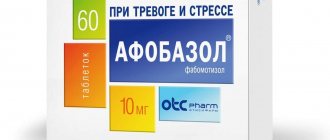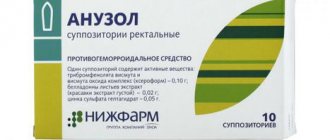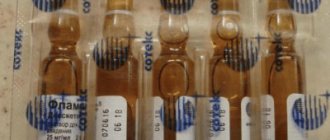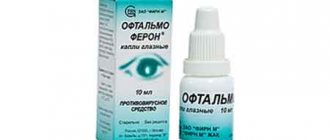Prohibited during pregnancy
Prohibited during breastfeeding
Not suitable for children
Can be taken by older people
Prohibited for use if you have liver problems
Prohibited for use if you have kidney problems
Tranquesipam is a potent drug with a pronounced sedative effect, which is available in pharmacies only by prescription and can be taken by the patient in strict compliance with the doctor’s recommendations. According to the instructions for use, Tranquesipam is a benzodiazepine tranquilizer, which is successfully used to provide a general anticonvulsant and muscle relaxant effect, treat sleep disorders and to provide a calming effect on the central nervous system by inhibiting the transmission of nerve impulses.
Benzodiazepine tranquilizers
“Tranquesipam” is an analogue of “Phenazepam”, which has been well known for many years, the first benzodiazepine tranquilizer. It was created in the USSR in the 70s of the last century. Benzodiazepine tranquilizers are second-generation tranquilizers that relieve anxiety, fear, and emotional tension. However, they have little effect on cognitive functions, such as memory, attention, etc. Their disadvantages include rapid addiction, so you should not use them for longer than the period prescribed by your doctor. Most modern psychopharmacological drugs belong to this group. Due to the complex effects on the human body, these drugs are strictly forbidden to be used without a doctor’s prescription and supervision.
If you want to find out details about treatment with a medication such as Tranquesipam before visiting the doctor, the instructions and reviews on the Internet will give a fairly complete picture of the action of this tranquilizer.
Indications for use
Tranquesipam is used to treat many diseases. It is one of the most powerful benzodiazepines with a pronounced anti-anxiety effect.
In addition to treating increased anxiety, irritability, fears and phobias, this drug is indicated for the following problems:
- neurotic and neurosis-like conditions;
- psychopathic and psychopath-like states;
- instability of mood and its sudden changes;
- hypochondria;
- seizures;
- some types of epilepsy;
- instability of the autonomic nervous system (what is commonly called vegetative-vascular dystonia);
- increased muscle tone with the inability to relax, tics, etc.
It is also successfully used for withdrawal symptoms (alcoholism, substance abuse), in the treatment of schizophrenia and for preliminary drug preparation for induction of anesthesia. In addition, Tranquesipam is used in neurological practice and anesthesiology. The instructions for the drug contain a complete list of indications.
Indications and contraindications for Tranquesipam
Indications for the use of Tranquesipam:
- neurotic and neurosis-like disorders;
- psychopathic and psychopath-like conditions of a pathological nature with a risk of disease progression;
- emotional lability with the presence of attacks of aggression, depression, suicidal tendencies, hallucinatory disorders;
- hypochondriacal senestopathic syndrome;
Senesto-hypochondriacal syndrome
- long-term severe sleep disorders;
- toxicomania syndrome;
- epilepsy (temporal form, myoclonic type);
- hyperkinetic phenomena, tics, muscle rigidity;
- withdrawal syndrome;
- panic disorders;
- to prevent emotional stress and attacks of fear;
- premedication in the first stage of anesthesia.
Among the contraindications to the prescription of the drug are:
- individual intolerance to the constituent components of the medication;
- allergic reaction to a pharmacological group of the benzodiazepine series;
- states of shock;
- myasthenia gravis;
Myasthenia gravis
- history of angle-closure glaucoma;
- acute poisoning with alcohol substitutes and alcohol-containing substances;
- drug overdose (including painkillers, sleeping pills);
- chronic obstruction of pulmonary origin;
- acute respiratory failure and sleep apnea;
- age under 18 years;
- pregnancy and lactation period;
- lesions of the cerebral cortex and subcortex of organic origin;
- severe disruption of the renal excretory system;
- liver diseases with impairment of its functions (cirrhotic damage to the parenchyma, hepatitis A, B, C).
See also:
Trazodone - instructions for use, analogues and reviews of the drug
Release forms
Tranquesipam is available in two forms:
- pills;
- solution.
Tranquesipam tablets contain the main substance of the drug bromodihydrochlorophenylbenzodiazepine in the amount of 0.5 and 1 mg per tablet. The pills are packaged in 50 pieces in dark glass jars or packed in 5 blisters of 10 tablets in cardboard boxes.
"Tranquesipam" in ampoules contains 1 mg of bromodihydrochlorophenylbenzodiazepine per 1 ml of solution. Intended for intramuscular and intravenous administration, sold in ampoules in pallets or packages of 5 or 10 ampoules with an ampoule knife included.
Tranquesipam's analogs
Full analogues of Tranquesipam are identical in the active substance, but may differ in price, auxiliary components, pharmaceutical form, dosage:
| Name | Features of the drug |
| Phenazepam | The effect on the patient’s body is identical - a psychotropic drug that is practically no different from Tranquesipam. Available in a cardboard box of 50 pcs. with a dosage of 500-1000 mg. The price ranges from 50-200 rubles, |
| Phenorelaxan | This is an analogue with limited use and more frequent occurrence of adverse reactions. Available in a dosage of 1000 mg, 50 pcs. Price from 60 to 85 rubles per package. |
| Elzepam | A Russian-made drug with a similar principle of action, but is available in a dose of 1000 mg. The price ranges from 60-100 rubles. |
Effect of the drug
Tranquesipam enhances the inhibitory effect of GABA (gamma-aminobutyric acid) on the transmission of nerve impulses. The drug has antiphobic, sedative, hypnotic, anticonvulsant properties, and is an excellent centrally acting muscle relaxant (that is, it reduces the hypertonicity of skeletal muscles).
The antiphobic, or anxiolytic, effect manifests itself in a decrease in emotional stress, feelings of fear, anxiety, and anxiety. Thanks to the sedative effect, neurotic signs of anxiety and fear also disappear. The process of falling asleep and staying asleep improves, disturbing dreams disappear.
Use as an anticonvulsant drug suppresses the convulsive impulse, but does not remove the focus of excitation, therefore it can only be used as an additional remedy in the treatment of seizures of various origins.
When taken orally, Tranquesipam is well absorbed from the gastrointestinal tract, the maximum concentration is reached after 1-2 hours. It is excreted by the kidneys after 6-18 hours.
General information about the drug Tranquesipam
The drug is prescribed by a doctor strictly according to indications, since the active substance can affect the functioning of the central nervous system and, if intolerant, cause serious complications in the functioning of the internal systems of the body. Tranquesipam is produced in Russia by the pharmaceutical corporation DALCHIMPHARM.
Drug group, INN, scope of application
The drug belongs to the pharmacological group of drugs with anxiolytic action - tranquilizers. The international nonproprietary name (INN) of the drug is Bromdihydrochlorphenylbenzodiazepine.
Effects of tranquilizers
Tranquesipam is used for treatment in several branches of medicine:
- psychiatry (elimination of phobias, mental disorders);
- neurology (treatment of neurological symptoms);
- cardiology (potentiating effect of drugs and therapy of concomitant neurological disorders;
- toxicology (treatment of alcoholism and substance abuse);
Forms of release and price of Tranquesipam
The drug is available in several forms:
- solution for intravenous and intramuscular administration in glass ampoules, the liquid is transparent or has a slight yellow tint, without impurities and odor;
- tablets are flat-cylindrical, white, with a chamfer.
Pricing policy may vary depending on the form of release and the number of tablets/ampoules in the package:
| Quantity per package, pieces | Drug dosage, mg | Pharmacy/chain, city | Cost in rubles |
| Tablet | |||
| 50, cardboard packaging | 1 | "AVESTA", Moscow | 49 |
| 50, cardboard packaging | 1 | "Rainbow", St. Petersburg | 100 |
| 50, cardboard packaging | 1 | "Farmakor", Astrakhan | 110 |
| 50, polymer jar | 1 | "Healthy People", Moscow | 111 |
| 50, polymer jar | 1 | Pharmacy "36.6", St. Petersburg | 109 |
| 50, polymer jar | 1 | Samara Municipal Pharmacies, Samara | 81 |
| Ampoules | |||
| 5 | 1 | "Healthy People", Moscow | 88 |
| 5 | 1 | Pharmacy "36.6", St. Petersburg | 91 |
| 5 | 1 | "Farmakor", Astrakhan | 88 |
| 10 | 1 | "AVESTA", Moscow | 97 |
| 10 | 1 | "Rainbow", St. Petersburg | 122 |
| 10 | 1 | Samara Municipal Pharmacies, Samara | 99 |
Compound
The composition of the drug Tranquesipam, both for parenteral solution and for tablets in a dosage of 1 mg, includes the main active ingredient - bromodihydrochlorophenylbenzodiazepine (7-bromo-1,3-dihydro-5-(2-chlorophenyl)-2H-1,4-benzodiazepine- 2-on), as well as auxiliary components:
| Name of components | In tablets, mg | In tablets, mg | In ampoules, mg |
| bromodihydrochlorophenylbenzodiazepine | 1 | 0,5 | 1 |
| polyvinylpyrrolidone low molecular weight medical | — | — | 9 |
| distilled glycerin | — | — | 100 |
| sodium metabisulfite | — | — | 2 |
| polysorbate (tween-80) | — | — | 50 |
| calcium stearate | 0,1 | 0,012 | — |
| potato starch | 4,27 | 2,85 | — |
| lactose monohydrate | 10,405 | 6,95 | — |
| medical gelatin | 0,098 | 0,051 | — |
| sodium hydroxide solution (pH 6-7.5) | — | — | 0.1 M |
| water for injections | — | — | 1 ml |
Pharmacodynamics and pharmacokinetics
The drug has a pronounced inhibitory effect on gamma-aminobutyric acid (receptors in the allosteric center of the supramolecular GABA-benzodiazepine-chlorionophore-receptive complex), which is one of the main conductors of nerve impulse transmission in the central nervous system.
The areas of the hypothalamus, nonspecific nuclei of the thalamus and the limbic zone of the subcortex of the brain are most tropic to the active substance. Thus, Tranquesipam has an anxiolytic, anticonvulsant, hypnotic, and also muscle relaxant effect on the body. The main goal is achieved in the following areas:
- the anxiolytic effect with a decrease in emotional stress, frightening hallucinations, and anxiety is due to a direct effect on the amygdala complex of the limbic system;
Types of drug effects
- the sedative effect is manifested under the influence on the reticular formation and thalamus;
- normalization of sleep quality occurs due to the suppression of vegetative and motor stimuli;
- anticonvulsant effect occurs by inhibiting presynaptic impulse processes;
- the muscle relaxant effect occurs through inhibition of polysynaptic and monosynaptic impulses.
The maximum concentration of the substance is observed 1-2 hours after oral administration. Elimination occurs in the urine within 24 hours (counting from taking the drug).
See also:
Tiapridal - instructions for use, reviews and analogues
Mode of application
The tableted drug is taken orally in the usual way. If you take Tranquesipam tablets, the instructions limit their intake to the following dosages:
- sleep disorders – 0.25-0.5 mg half an hour before bedtime;
- for neurotic, psychopathic and similar conditions - 0.5-1 mg 2-3 times a day (after 4 days you can increase the dose to 4-6 mg per day if the drug is well tolerated);
- for fear, anxiety - 3 mg per day, then the dose is increased until the result is obtained;
- for alcohol withdrawal – 2-5 mg per day;
- for muscle hypertonicity – 2-3 mg per day.
If it is necessary to very quickly relieve fear, anxiety or psychotic states, use the Tranquesipam solution. Instructions for use (this drug is prescribed in ampoules less often than in tablets) provides information that it can be administered intravenously or intramuscularly, the result can be obtained starting from 0.5 mg. But even in the most severe cases, the maximum dose of the drug is 9 mg.
Detailed information about the dosage of the drug in other cases can be obtained by reading the instructions for Tranquesipam. However, it is worth remembering that the maximum daily dose cannot exceed 10 mg.
Be sure to check the doctor’s prescriptions with the recommendations given for treatment with a drug such as Tranquesipam, the instructions for use. The tablets must be taken in strictly defined doses, otherwise the treatment may be ineffective or even harmful. Therefore, if you have any doubts about the dosage and frequency of administration prescribed to you, or they do not correspond to the instructions, be sure to inform your doctor.
Instructions for use of Tranquesipam in ampoules and tablets
The drug is applicable both for oral administration and for administration of the solution parenterally and intramuscularly. The average daily dose of the drug for an adult is 1.5-5 mg, and the maximum daily dose is 10 mg.
Depending on the severity of the process and the patient’s condition at the time of prescription, the following doses of medication are used:
| Therapy for pathological conditions | Pills | Ampoules |
| For the relief of anxiety disorders, attacks of panic and fear, psychomotor agitation, vegetative paroxysms |
|
|
| For sleep disorders | Take 200-500 mcg once at night before bed. | 0.5-1 ml of 0.1% solution is administered intramuscularly before bedtime. |
| Therapy of alcohol withdrawal and substance abuse syndromes | 200-500 mcg/day, distributed in 2 doses. | 0.5 mg 1 time per day IM, preferably in the afternoon. |
| Treatment of epilepsy | Depending on the severity of the condition, a dosage of 200-1000 mcg per day is prescribed, divided into 3-4 doses. | From 0.5 to 3 mg per day intravenously. |
| For disorders of muscle tone, muscle hypertonicity, neurological tics and autonomic lability | 400-600 mcg divided into 2-3 doses per day, but not more than 1000 mcg (maximum permissible dosage). | Intramuscularly 0.5-1 mg 2 times a day. |
| For premedication before surgery | Intravenous injection of 3-4 ml of 0.1% solution. |
The course of therapy does not exceed 12-14 days of continuous use to prevent the development of addiction and dependence on the drug.
See also:
Triftazin - instructions for use, reviews, analogues and indications
Contraindications
Any tranquilizer has a wide range of contraindications. Tranquesipam did not escape this fate either. It is prohibited to take it in case of severe myasthenia gravis, severe kidney and liver diseases (for example, cirrhosis or Botkin's disease). Contraindication is poisoning with medications, such as other tranquilizers, antipsychotics, sleeping pills, as well as poisoning with narcotic and alcoholic drugs.
An almost absolute contraindication is pregnancy, especially in the first trimester. Tranquesipam can have a teratogenic effect on the fetus (that is, it disrupts the development of tissues and organs and leads to congenital deformities). If the mother took this drug during pregnancy, other effects on the fetus included depression of the central nervous system, respiratory failure and suppression of the sucking reflex in newborns. In addition, constant use of Tranquesipam while expecting a child can lead to the development of withdrawal syndrome in the newborn. Therefore, during pregnancy, Tranquesipam is used only for health reasons.
In addition, you should stop taking the drug during lactation and choose another drug (or stop breastfeeding while treating with this tranquilizer, if the need for it is high). If, however, the condition requires treatment with a drug such as Tranquesipam, the instructions warn about possible complications after taking it.
The drug should not be taken before the age of 18, as its safety and effectiveness in children have not been studied. In addition, contraindications include glaucoma (both in the stage of an acute attack and in cases of predisposition), acute respiratory failure, shock, coma. When using Tranquesipam during severe depression, manifestations of suicidal tendencies are possible. And of course, you should avoid taking the tranquilizer if you are hypersensitive to any of its components. Therefore, before treatment, it is necessary to consult a doctor, informing him of all factors that may be an obstacle to taking the drug.
Side effects
The list of side effects of Tranquesipam, like any similar drug, is also quite long. The patient may experience dizziness, sometimes headache, suffer from fatigue, drowsiness, muscle weakness, complain of impaired memory, concentration and coordination of movements, and even dysarthria - problems with pronunciation (especially if high doses are prescribed), and sometimes insomnia. This usually manifests itself at the beginning of treatment, more often in older people and those taking Tranquesipam for the first time. The instructions for use contain mandatory information about possible side effects and the frequency of their occurrence.
Also, undesirable but possible manifestations include muscle reactions - tremors, uncontrolled movements, including the eyes, muscle spasms.
Often there is an inexplicable excited state, euphoria or, on the contrary, excessive irritability, depressed mood, depression, and outbursts of aggression. In extremely rare cases, suicidal tendencies and hallucinations occur. But most often these symptoms manifest themselves as a withdrawal syndrome - with abrupt withdrawal or a sharp reduction in the dose of the drug.
If you are sensitive to the medication, an allergic reaction such as itching or rash may occur. Also, when taking Tranquesipam, patients may complain of dry mouth, nausea and diarrhea or constipation and other problems with the gastrointestinal tract, such as heartburn, vomiting, decreased appetite, and impaired liver function.
Not so often, but urinary incontinence or retention, and renal dysfunction are still possible. In addition, there may be a decrease or increase in libido and dysmenorrhea in women. You should also not forget about getting used to the drug.
This is not a complete list of side effects, but most of them are extremely rare and may not appear at all with controlled use of Tranquesipam. You can reduce or remove side effects with a drug such as Mesocarb.
Possible side effects of Tranquesipam and overdose
Side effects from taking Tranquesipam can occur if the drug dosage regimen is violated or the development of intolerance to the components of the drug. Possible negative effects of the drug include:
| Body systems | Adverse reactions |
| CNS | Increased fatigue, insomnia, migraine-like pain, disorientation, difficulty concentrating, ataxia, inhibition of the thought process, slower motor reactions, confusion, emotional lability (from euphoria to depression and suicidal thoughts), fine tremors of the whole body, dysarthria, psychomotor agitation, hallucinations, sleep disturbance. |
| From the gastrointestinal tract | Dryness of the mucous membranes of the oral cavity, increased salivation, dyspepsia, heartburn, nausea, vomiting, loss of appetite, diarrhea. |
| From the excretory system and reproductive organs | Enuresis, anuria, oliguria, decreased libido, dysmenorrhea and algodismenorrhea. |
| Disturbances in the functioning of the circulatory system | Leukopenia and neutropenia, agranulocytosis, anemia, thrombocytopenia. |
| Skin | Pinpoint rash, itching, icterus. |
| Musculoskeletal system | Paresthesia, convulsions. |
| Disorders of the senses | Diplopia, hyperacusis. Auditory, visual and olfactory hallucinatory disorders. Distortion of taste. |
| CVS disorders | A sharp drop in blood pressure, rapid heartbeat. |
In case of an overdose of drugs, depression of consciousness to the point of stupor or even coma, decreased reflexes, nystagmus, impaired automaticity with migration of the central pacemaker with a decrease in heart rate, and the appearance of mixed shortness of breath may be observed.
The pathological condition can be stopped only in a hospital setting with monitoring of vital functions and support of respiratory and cardiovascular activity (ventilator, intubation, pacemaker drugs) and symptomatic relief of the negative effects of Tranquesipam. Flumazenil is a specific antidote; it is used according to the following scheme: 0.2 mg of glucose dissolved in a 5% solution or an isotonic suspension of 0.9% NaCl is administered slowly intravenously.
See also:
Neupilept - instructions for use, analogues and reviews
Precautions when taking Tranquesipam
It is necessary to carefully stop taking this drug: it should be stopped gradually, gradually reducing the dose so as not to cause withdrawal syndrome. Sudden cessation of use may cause depression, irritability, insomnia, excessive sweating and other symptoms, especially if the drug was previously taken for more than 8-12 weeks.
Tranquesipam should not be taken while driving or by those whose profession requires increased concentration. During treatment you should avoid alcohol in any form.
If Tranquesipam is taken in the presence of renal or liver failure, then it is necessary to monitor liver enzymes and peripheral blood patterns.
If a patient is taking a tranquilizer for the first time, the dose of Tranquesipam should be lower than for patients who have already taken tranquilizers and antidepressants or who suffer from alcoholism.
Dependence on the drug occurs with long-term use in doses of more than 4 mg per day. If you have been taking Tranquesipam for more than 3 weeks, the instructions for use recommend that you consult with your doctor about further use.
The drug must be discontinued immediately if the patient experiencing reactions such as increased aggressiveness, convulsions, feelings of fear, especially thoughts of suicide or hallucinations. Problems falling asleep, shallow sleep, etc. are also grounds for discontinuing the drug.
Tranquesipam
Use during pregnancy and breastfeeding
During pregnancy, use is possible only for health reasons.
It has a toxic effect on the fetus and increases the development of birth defects when used in the first trimester of pregnancy. When taken in therapeutic doses later in pregnancy, it may cause CNS depression in the newborn. Chronic use during pregnancy can lead to physical dependence with the development of withdrawal syndrome in the newborn. Children, especially young children, are very sensitive to the CNS depressant effects of benzodiazepines. Use immediately before or during childbirth may cause respiratory depression in the newborn, decreased muscle tone, hypotension, hypothermia and weak sucking ("floppy baby" syndrome).
Use for liver dysfunction
Use with caution in case of liver failure.
Use for renal impairment
Use with caution in case of renal failure.
Use in children
Contraindicated in children and adolescents under 18 years of age (safety and effectiveness have not been determined).
special instructions
Use with caution in case of liver and/or renal failure, cerebral and spinal ataxia, history of drug dependence, tendency to abuse psychoactive drugs, hyperkinesis, organic brain diseases, psychosis (paradoxical reactions are possible), hypoproteinemia, sleep apnea (established or suspected ), in elderly patients.
In case of renal and/or liver failure and long-term treatment, it is necessary to monitor the peripheral blood picture and the activity of liver enzymes.
Patients who have not previously taken psychoactive drugs exhibit a therapeutic response to the use of phenazepam in lower doses compared to patients taking antidepressants, anxiolytics, or alcoholism.
Like other benzodiazepines, it has the ability to cause drug dependence when taken long-term in large doses (more than 4 mg/day). If you suddenly stop taking it, withdrawal symptoms may occur (including depression, irritability, insomnia, increased sweating), especially with long-term use (more than 8-12 weeks). If patients experience unusual reactions such as increased aggressiveness, acute states of agitation, feelings of fear, thoughts of suicide, hallucinations, increased muscle cramps, difficulty falling asleep, shallow sleep, treatment should be discontinued.
During treatment, patients are strictly prohibited from consuming ethanol.
The effectiveness and safety of the drug in patients under 18 years of age have not been established.
In case of overdose, severe drowsiness, prolonged confusion, decreased reflexes, prolonged dysarthria, nystagmus, tremor, bradycardia, shortness of breath or difficulty breathing, decreased blood pressure, and coma are possible. Gastric lavage and activated charcoal are recommended; symptomatic therapy (maintaining breathing and blood pressure), administration of flumazenil (in a hospital setting); hemodialysis is ineffective.
Impact on the ability to drive vehicles and operate machinery
During the treatment period, care must be taken when driving vehicles and engaging in other potentially hazardous activities that require increased concentration and speed of psychomotor reactions.
Interaction with other drugs
Since such drugs are taken in combination with other medications, it is necessary to know about their effects on each other. For example, Tranquesipam reduces the effectiveness of Levodopa and increases the toxicity of Zidovudine.
If neuroleptic, antiepileptic or hypnotic drugs or muscle relaxants are prescribed simultaneously with Tranquesipam, the effect of both drugs is enhanced. But the same interaction occurs when taking a tranquilizer and ethanol simultaneously, as a result of which alcohol poisoning may increase.
Antihypertensive drugs enhance the reduction in blood pressure during treatment with Tranquesipam.
If you think that your condition requires treatment with a drug such as Tranquesipam, the instructions for use should be studied in advance. If the medication is really indicated for you, you must inform your doctor about what medications you are already taking.
Analogs
Since Tranquesipam belongs to the most extensive and popular group of benzodiazepines, if necessary, it is easy to find a suitable analogue. Tranquesipam itself is an analogue of Phenazepam, a fairly well-known tranquilizer. In addition to it, the following drugs with similar effects can be noted:
- "Fesipam".
- "Phenazepam-Ros".
- "Phenorelaxan".
- "Elzepam", as well as many others containing the same active substance in the base.
They are similar in action, but may differ in price, some components and, as a result, the presence and severity of side effects. In each specific case, the doctor must choose the drug; it is he who determines which drug is suitable for the patient - Phenazepam or Tranquesipam. The instructions for use do not consider analogues, but give the name of the active substance, which can be used to determine whether tranquilizers are from the same group, that is, whether they act in a similar way on the same disease.
Reviews
Most people taking Tranquesipam note that it is actually a good drug. A wide spectrum of action and, despite the large list, mild side effects, as well as effectiveness, allowed the tranquilizer to become one of the most popular drugs in its field. In simple words: this is an excellent sedative, a good sleeping pill. In addition, it acts very quickly and has a cumulative effect. The patients' lives quickly return to normal and become calm and joyful. Reviews often mention the fact that a worthy replacement for Phenazepam is Tranquesipam.
Do not forget that treatment with this drug can only be started after a doctor’s prescription. The drug is sold only by prescription. Self-medication is extremely dangerous due to contraindications and possible side effects, so the first thing you should study after prescribing Tranquesipam is the instructions for use. Reviews from those who have already used the drug are quite positive, but almost all of them contain an important clarification: if you strictly follow the instructions of your doctor, Tranquesipam can solve many health problems without adding new ones, which will significantly change your life for the better.











